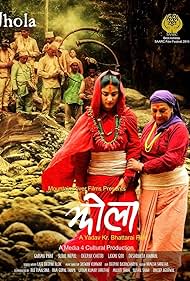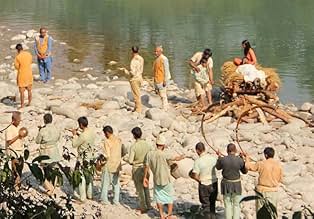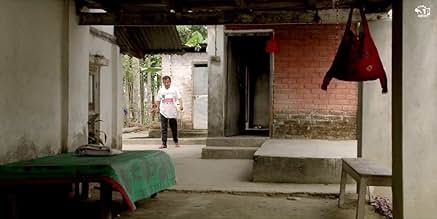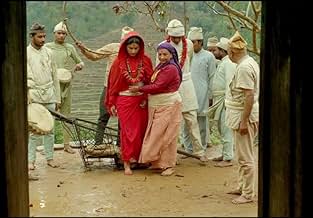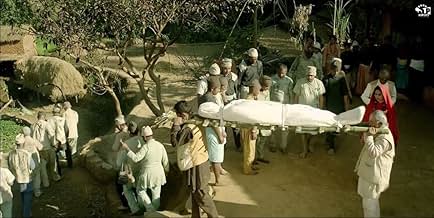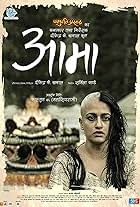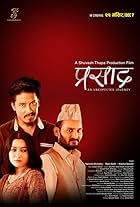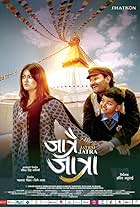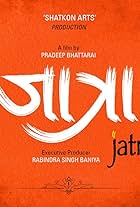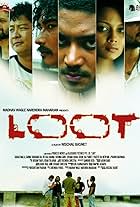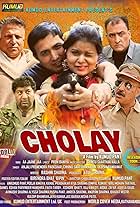Jhola
- 2013
- 1h 30m
IMDb RATING
7.8/10
1.1K
YOUR RATING
After her husband's death, a girl is forced to die due to the Sati practice in Nepal.After her husband's death, a girl is forced to die due to the Sati practice in Nepal.After her husband's death, a girl is forced to die due to the Sati practice in Nepal.
- Director
- Writers
- Stars
- Awards
- 1 win total
- Director
- Writers
- All cast & crew
- Production, box office & more at IMDbPro
Featured reviews
Only thing i love about this movie is its story, what flim maker wants to tell us from this movie. But maybe because of lack of good facilities e, actor they can't made it cult classic. This story is surely oscar deserving, if foreign legendary director with best management and crew made this movie its surely won oscar. But we are in Nepal it can't possible to made world class from this limited facilities in industry. I love this movie so much.
Jhola is one of the best movie ever I have watched. Here,in this movie(Jhola), Director tried to show how wife used to kill herself, once her husband died, just to wipe off the sin of her husband without caring her age. Though she didn't die in the movie, but literally its showing sati practice of 18th century in Nepal. Sati system was abolished by late Rana Prime Minister Chandra Shamsher Janga Bahadur Rana(JBR). It was really a bad practice,even now there is saying in Nepali " Sati le sarapeko desh Nepal"." Sati le sarapeko desh Nepal" means Goddess crushed country Nepal. Sati means Goddess. I recommend you all to watch this movie "Jhola".
The Nepalese movie Jhola, directed by Yadav Kumar Bhattarai and released in 2014, is an adaptation of Krishna Dharabasi's short story of the same name. It is a poignant portrayal of the outdated and inhumane practice of Sati pratha (the tradition where a widow immolates herself on her husband's funeral pyre) in Nepalese society. Set in an unnamed rural village during an era when cultural practices overruled humanity, Jhola is both a tragic and uplifting tale that sheds light on one woman's struggle against societal norms. This is the most favruote movie I have ever seen this stops women violences . Women discrimination and other different problems . Due to this many people learn that sati Partha is illegal in Nepal . This tradition took many lives of women . It is vary good that it is not still used in Nepa.
Jhola is not just a story of personal tragedy but also a critique of societal norms that prioritize tradition over human dignity. It highlights the struggles of women who are victimized by such practices. By drawing attention to Sati pratha, the movie encourages viewers to reflect on the importance of challenging oppressive systems. Jhola is not just a story of personal tragedy but also a critique of societal norms that prioritize tradition over human dignity. It highlights the struggles of women who are victimized by such practices. By drawing attention to Sati pratha, the movie encourages viewers to reflect on the importance of challenging oppressive systems.
Conclusion
Jhola is a powerful and thought-provoking film that shines a spotlight on a dark chapter of Nepalese history. It serves as both a cautionary tale and a call to action for societal change. With its emotional storytelling, strong performances, and cultural significance, Jhola is a must-watch for anyone interested in Nepalese cinema and social issues.
Conclusion
Jhola is a powerful and thought-provoking film that shines a spotlight on a dark chapter of Nepalese history. It serves as both a cautionary tale and a call to action for societal change. With its emotional storytelling, strong performances, and cultural significance, Jhola is a must-watch for anyone interested in Nepalese cinema and social issues.
This is my first ever movie review. On November 22, 2014, I had a chance to see Nepali movie Jhola during a screening at the Nepali Sahitya Sanjh organized by a local Nepali organization in Madison, Wisconsin. The story writer of the movie, Krishna Dharabai, was also present during the event. He has also acted in the movie.
I had read the story Jhola before it was made as a movie. As a reader, I was not very impressed with the story; although I deeply appreciated the intent behind it. It shows forceful and brutal immolation of widowed woman on the husband's funeral pyre by a tradition called 'Sati'. The tradition was prevailing in Nepal until around hundred years ago. My thoughts at the time I read the story was that I wished the story was about some contemporary atrocities on women like torturing for being 'witches' or on-going oppression of women or rampant rape problems to name a few.
Different than the story, the movie at the end does make a connection between inhuman Sati tradition and on the going problems of today. However, I still wish that the story and the movie was about a contemporary shameful practice rather than abolished traditions like Sati or slavery that the mankind has overcome today. Keeping my wish behind, I am going to critic some things about movie itself.
Cinematography of the movie is strictly OK. I like the fact that the evening scenes of the movie have a dim lighting feeling as there was no electricity during that time in the kind of setting the movie was made. However, the day time scenes could have been more attractive visually; showcasing the natural beauty of the setting. Editing of the movie could be a little better as there were some transitions that showed poor editing. Great care was seen in making the clothes, utensils, and tools used. They match the timeline of the story. Screenplay was superb most of the time however there were some scenes that did not quite work as well as others. Like, falling of the stack of sticks after the news of the child artist's father died and the character of Laxmi Giri gasping for water after she found the Sati is alive work perfectly. However, the the scene when village women show pity on the main character's fate and a drop of water falling on a pond with ripples does not connect very well.
Casting of characters is overall good. Child artist has done exceptionally well. I think the main character Garima Pant portrays her role very well. However, if I were a casting director, I would have looked for little rougher but innocent looking mountain beauty for the role. Laxmi Giri, the evil looking priest (casted well) and other character actors are excellent. Knowing the author beforehand, I felt like Krishna Dharabasi being in movie a little awkward, I would have casted someone else in his role.
I think making a movie out of the original story was very worthwhile. The screenplay and the visual stimulation add value to the overall intent. Great job by late Deepak Aalok on screenplay. Direction by Yadav Kumar Bhattarai is good. The movie is outstanding in the pool of existing Nepali movies. It clearly deserves to be an official entry into Oscars from Nepal. However, if we compare to technical excellence and overall quality of world cinema, the movie just barely meets the standards. The message is great but being about an outdated ritual it does not have a very effective blow. I will not be surprised if it does not make to the eight amongst the other 80 or so entry into the Oscars in the foreign film category. However, who knows what the jury of the Oscars think. :)
Original review at: http://merasabdaharu.blogspot.com/2014/11/jh ola- nepali-movie-review.html
I had read the story Jhola before it was made as a movie. As a reader, I was not very impressed with the story; although I deeply appreciated the intent behind it. It shows forceful and brutal immolation of widowed woman on the husband's funeral pyre by a tradition called 'Sati'. The tradition was prevailing in Nepal until around hundred years ago. My thoughts at the time I read the story was that I wished the story was about some contemporary atrocities on women like torturing for being 'witches' or on-going oppression of women or rampant rape problems to name a few.
Different than the story, the movie at the end does make a connection between inhuman Sati tradition and on the going problems of today. However, I still wish that the story and the movie was about a contemporary shameful practice rather than abolished traditions like Sati or slavery that the mankind has overcome today. Keeping my wish behind, I am going to critic some things about movie itself.
Cinematography of the movie is strictly OK. I like the fact that the evening scenes of the movie have a dim lighting feeling as there was no electricity during that time in the kind of setting the movie was made. However, the day time scenes could have been more attractive visually; showcasing the natural beauty of the setting. Editing of the movie could be a little better as there were some transitions that showed poor editing. Great care was seen in making the clothes, utensils, and tools used. They match the timeline of the story. Screenplay was superb most of the time however there were some scenes that did not quite work as well as others. Like, falling of the stack of sticks after the news of the child artist's father died and the character of Laxmi Giri gasping for water after she found the Sati is alive work perfectly. However, the the scene when village women show pity on the main character's fate and a drop of water falling on a pond with ripples does not connect very well.
Casting of characters is overall good. Child artist has done exceptionally well. I think the main character Garima Pant portrays her role very well. However, if I were a casting director, I would have looked for little rougher but innocent looking mountain beauty for the role. Laxmi Giri, the evil looking priest (casted well) and other character actors are excellent. Knowing the author beforehand, I felt like Krishna Dharabasi being in movie a little awkward, I would have casted someone else in his role.
I think making a movie out of the original story was very worthwhile. The screenplay and the visual stimulation add value to the overall intent. Great job by late Deepak Aalok on screenplay. Direction by Yadav Kumar Bhattarai is good. The movie is outstanding in the pool of existing Nepali movies. It clearly deserves to be an official entry into Oscars from Nepal. However, if we compare to technical excellence and overall quality of world cinema, the movie just barely meets the standards. The message is great but being about an outdated ritual it does not have a very effective blow. I will not be surprised if it does not make to the eight amongst the other 80 or so entry into the Oscars in the foreign film category. However, who knows what the jury of the Oscars think. :)
Original review at: http://merasabdaharu.blogspot.com/2014/11/jh ola- nepali-movie-review.html
Did you know
- TriviaOfficial submission of Nepal to the best foreign language film category of the 87th Academy Awards 2015.
Details
- Release date
- Country of origin
- Language
- Also known as
- Bag
- Filming locations
- Nepal(Studio)
- Production company
- See more company credits at IMDbPro
Box office
- Budget
- NPR 5,000,000 (estimated)
- Runtime1 hour 30 minutes
- Color
- Aspect ratio
- 1.85 : 1
Contribute to this page
Suggest an edit or add missing content

